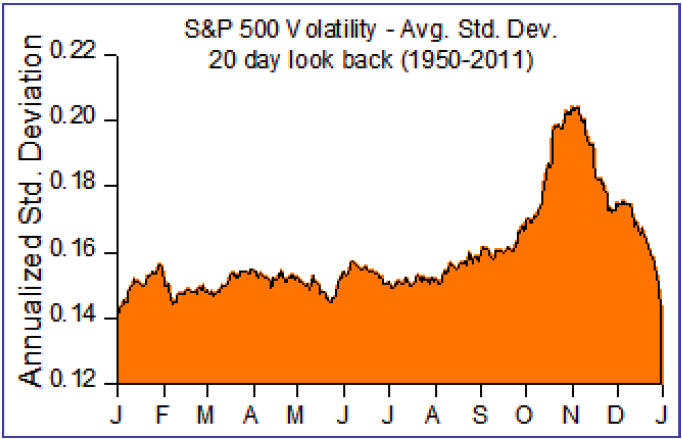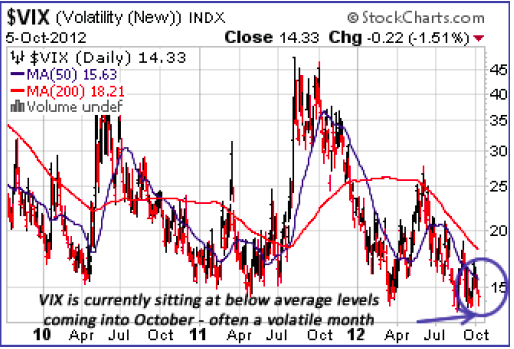

Time In Time Out: Outsmart the Stock Market Using Calendar Strategies, my first seasonal book, written in 1999, I performed a basic seasonal volatility analysis. Investors often use the CBOE Volatility Index (VIX), which was originally designed in 1993 to measure the market’sexpectation of 30-day volatility implied by at-the-money S&P 100 Index (OEX) option prices. Although calculating seasonal volatility from the VIX is a good current measure of volatility, VIX data does not go back as far as I would like to establish a trend in a broad market. As a result, I have approximated volatility as a dispersion of end of day prices for the S&P 500 using a twenty day standard deviation look back. Although there is a time lag issue with this methodology, it does give a general indication of a spike in volatility in October. The month of October, on average has the highest volatility. The point is that volatility in October can present opportunities to increase equity positions. Last year the market corrected severely in September and the market started a strong rally at the beginning of October. HAC increased equity positions early in October to 30% last year. This year, without a major correction in September to “bounce” the market at the beginning of October, investors should lean towards adding their equity towards the end of October.
It is interesting to note that the volatility in the stock market,as represented by the VIX is historically low, during October, which on average has the highest volatility. This divergence is interesting and indicates that the market is very complacent and is susceptible to a large correction.

The weakest part of October occurs from the 19th to the 27th. From 1950 to 2011, this time period has produced an average loss of 0.8% and has been positive 56% of the time. Even taking out the huge correction on October 19th, 1987, the numbers are still weak. If another large drop does occur in mid-October to late October, it should be viewed as an opportunity.
….to read the entire Brooke Thackray Market Letter go HERE












